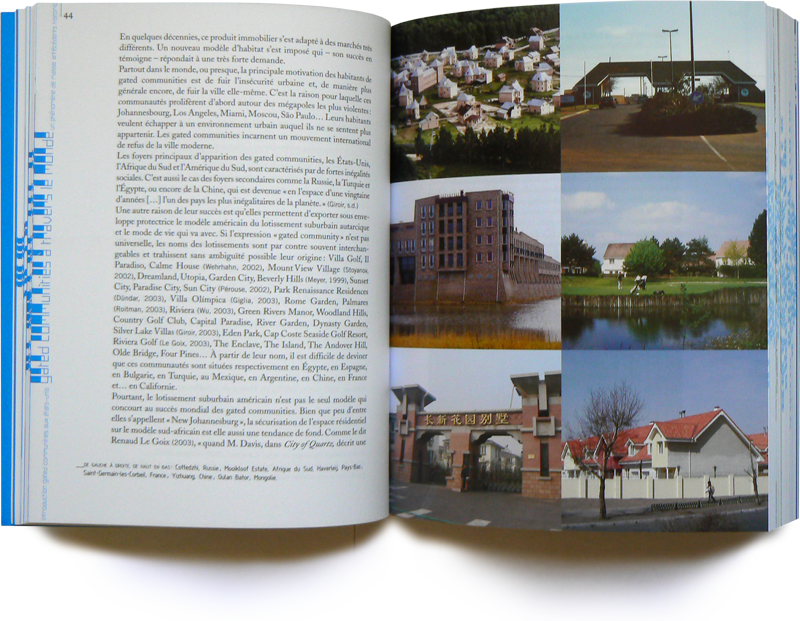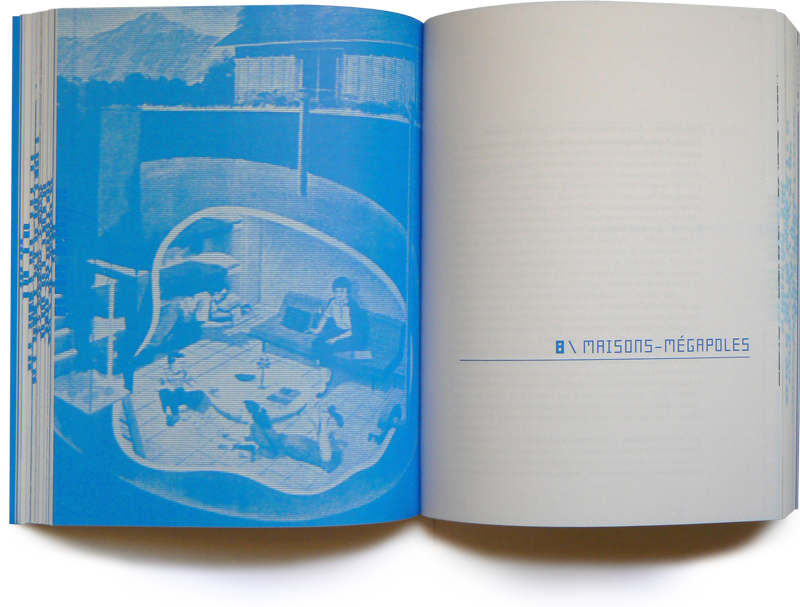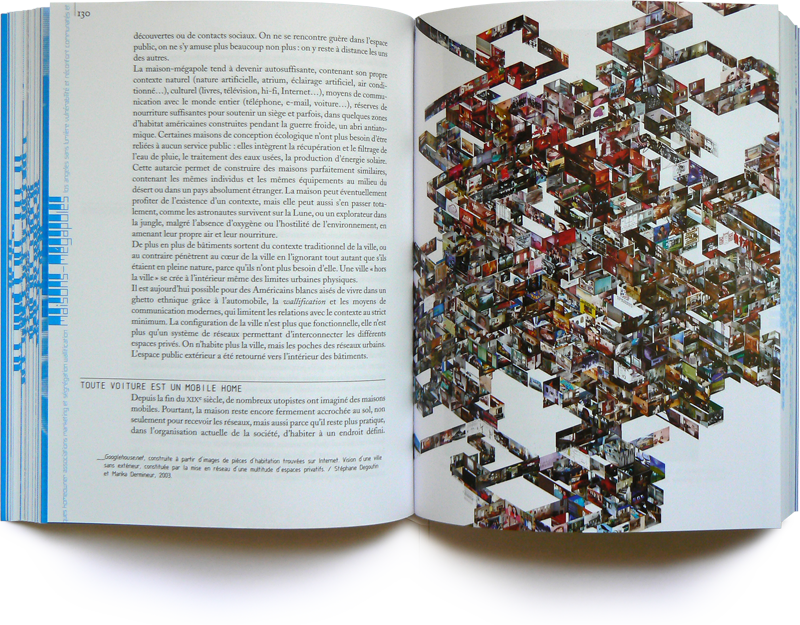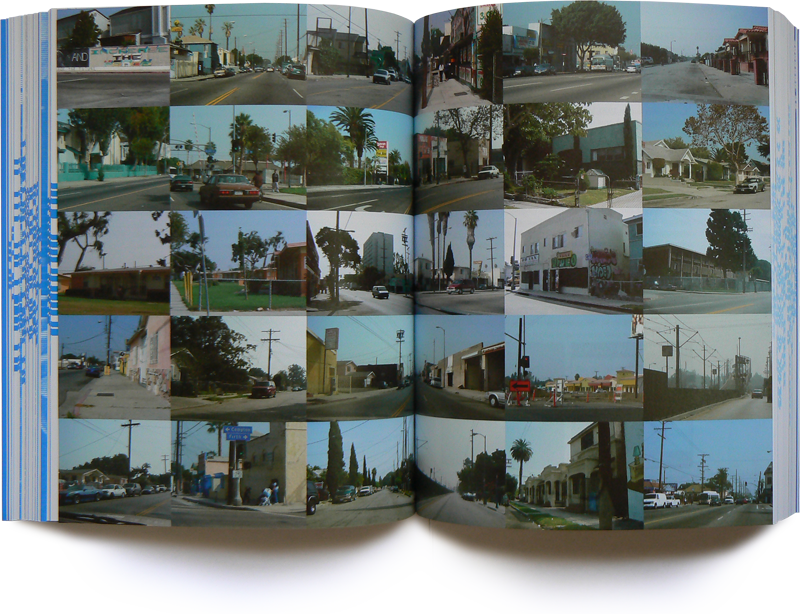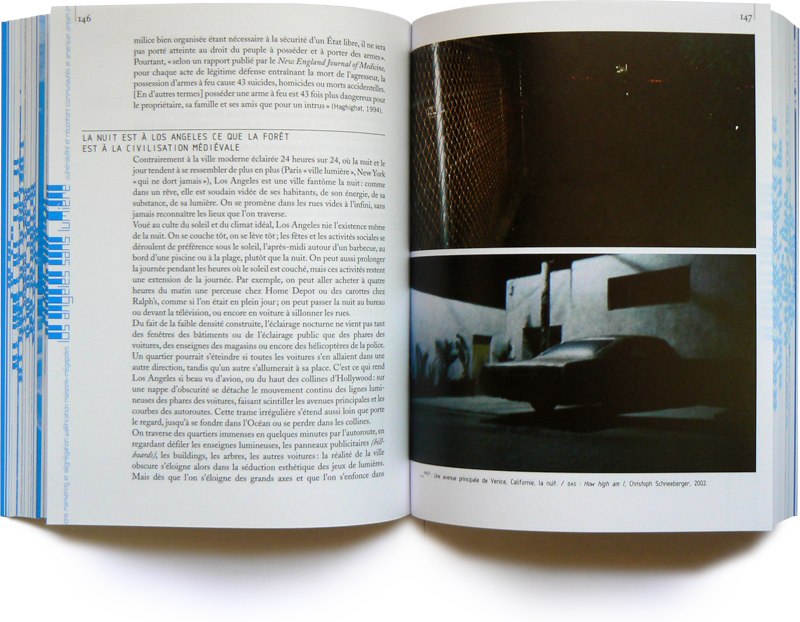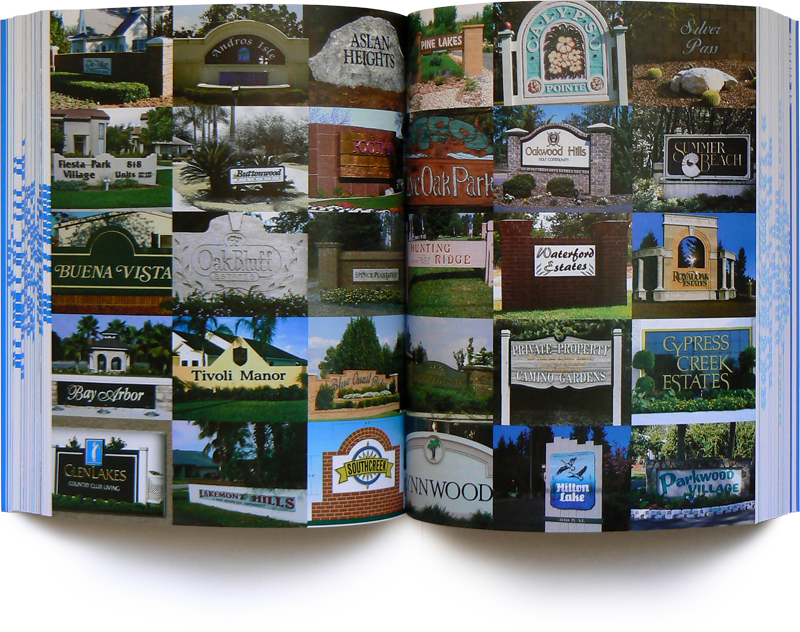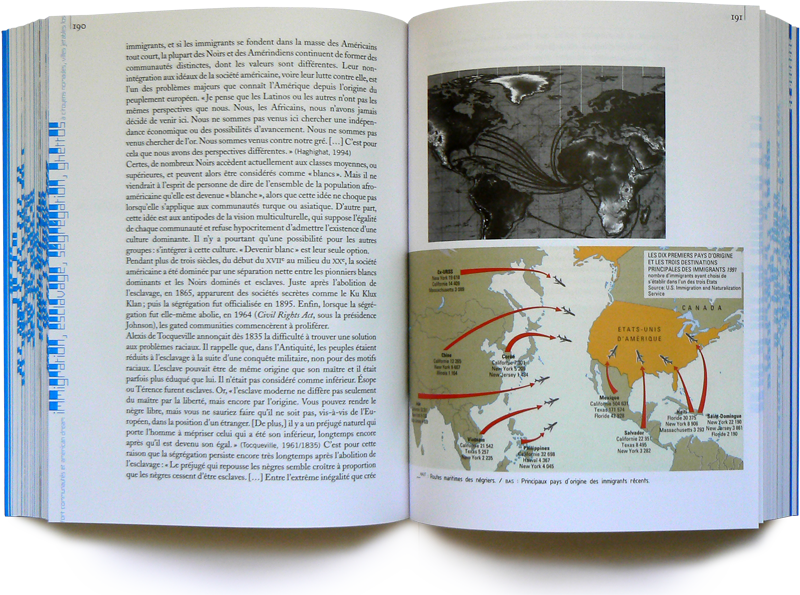Commander: chez l'éditeur / Amazon / Fnac / Alapage / Chapitre

| Ce texte est la retranscription d'une enquête sur la manière dont se construit la ville contemporaine après la disparition de l'espace public au sens européen du terme: accessible à tous et libre d'accès. En 21 chapitres, et en changeant autant de fois de point de vue sur la question, j'interroge le phénomène des (gated communities) comme un révélateur de cette évolution. L'expression gated community désigne un quartier résidentiel fermé, où l'on ne peut rentrer à moins d'être un habitant ou un invité. Aux Etats-Unis, on estime que 10 millions de personnes habitent dans ce type d'environnement. Le même phénomène se développe dans de très nombreux pays du monde, en particulier en Amérique du Sud, en Afrique du Sud, en Chine, en Russie (et dans une moindre mesure en Europe, notamment en France). Lorsqu'on lit certaines descriptions de chercheurs (City of quartz de Mike Davis, Privatopia d'Evan McKenzie ou Fortress America de Blakely & Snyder...), on a l'impression de lire de la science-fiction. Le thème a d'ailleurs inspiré plusieurs auteurs et réalisateurs de science-fiction : Neal Stephenson (Snowcrash), Octavia Butler (The parable of the Sower), James Graham Ballard (Running Wild, Super Cannes…), Peter Weir (The Truman Show), un épisode de la série X-Files... La première chose qui frappe est, au contraire, leur banalité. Les gated communities ne constituent pas une rupture avec la logique de la ville américaine. Elles en sont l'aboutissement logique : environnement conçu pour la voiture, maisons vastes, sans clôtures, centrées sur l'intérieur, architecture de promoteur, rues en nouilles, culs-de-sacs, peu de piétons... Les gated communities ne sont pas anormales aux Etats-Unis, elle incarnent l'idéal résidentiel du Rêve Américain, volonté de construire le paradis sur terre, résultat de la primauté absolue accordée au choix individuel, impliquant de choisir son lieu de résidence et son environnement social, cette déconcertante banalité propre aux environnements suburbains américains. J'ai voulu interroger le sentiment troublant que suscite le fait de se situer entre science-fiction et banalité, entre Disneyland et ghetto. Toute l'évolution de la banlieue américaine tend vers cet idéal; les gated communities n'en sont donc peut-être pas l'expression ultime. L'inverse exact de l'idéal européen de la ville. Présentation de l'éditeur Longtemps un épiphénomène, les gated communities – enclaves résidentielles privées protégées par des murs ou grilles et à l’entrée réservée aux seuls résidents ou leurs invités- prospèrent dans le monde entier. Elles ne relèvent plus d’une aberration urbaine ou de simples « ghettos pour riches » mais incarnent l’aboutissement d’une évolution, peut-être inexorable, de la ville contemporaine où la mixité et l’hétérotopie deviennent l’exception. L’ouvrage éclaire les conditions d’apparition du phénomène. Dans l’environnement incertain des mégapoles où tout est démesuré, sans qualité, et l’habitant un être nomade, le salut apparaît dans de petites communautés homogènes, où la réminiscence du village le dispute au modèle du parc à thèmes. Sommaire Préface par Thierry Paquot Introduction : la ville après l’espace public 1. Gated communities aux États-Unis 2. Gated communities à travers le monde 3. Un phénomène de masse 4. Antécédents historiques 5. Homeowner associations 6. Marketing et ségrégation 7. « Wallification » 8. Maisons-mégapoles 9. Los Angeles sans lumière 10. Vulnérabilité et réconfort 11. Communautés et American dream 12. Immigration, esclavage, ségrégation, ghettos 13. À citoyens nomades, villes jetables 14. Los Angeles : le refus de la ville moderne 15. Automobiles 16. No-go areas vs Nogoland 17. Prisonniers volontaires et prisonniers involontaires 18. The geography of everywhere 19. « Privatisation » de l’espace public 20. Parcs d’attractions 21. Micromégapoles Conclusion : la logique du système urbain privé | This text is a transcription of an investigation into how the contemporary city is being constructed following the disappearance of public space in the European sense of the term: accessible to all and open to everyone. Across 21 chapters, each adopting a different perspective on the issue, I examine the phenomenon of gated communities as a revealing symptom of this evolution. The expression gated community refers to a closed residential neighborhood, where entry is restricted to residents or invited guests. In the United States, it is estimated that 10 million people live in such environments. The same phenomenon is spreading across many countries around the world, particularly in South America, South Africa, China, Russia (and to a lesser extent in Europe, especially in France). When reading certain researchers' descriptions—City of Quartz by Mike Davis, Privatopia by Evan McKenzie, or Fortress America by Blakely & Snyder—it often feels like reading science fiction. The theme has indeed inspired several science fiction writers and filmmakers: Neal Stephenson (Snow Crash), Octavia Butler (The Parable of the Sower), J.G. Ballard (Running Wild, Super-Cannes…), Peter Weir (The Truman Show), and an episode of The X-Files... What strikes one first, however, is their sheer banality. Gated communities are not a break from the logic of the American city—they are its logical outcome: environments designed for cars, large houses without fences, inward-facing architecture, developer-built homes, winding streets, cul-de-sacs, few pedestrians... Gated communities are not abnormal in the United States; they embody the residential ideal of the American Dream—a desire to build paradise on Earth, the result of an absolute emphasis on individual choice, including the choice of one's place of residence and social environment. This disconcerting banality is characteristic of American suburban environments. I wanted to explore the unsettling feeling of being caught between science fiction and ordinariness, between Disneyland and the ghetto. All of American suburbia's evolution tends toward this ideal; gated communities may therefore not be its ultimate expression—but simply a phase in the process. They represent the exact opposite of the European ideal of the city. Publisher’s Description Long considered a marginal phenomenon, gated communities—private residential enclaves protected by walls or fences, with access restricted to residents and their guests—are now flourishing across the globe. No longer simply urban anomalies or “ghettos for the rich,” they represent the culmination of a broader, perhaps inexorable, evolution of the contemporary city, where diversity and heterotopia become the exception rather than the norm. This book sheds light on the conditions that have led to the emergence of the phenomenon. In the uncertain environment of megacities—where everything is outsized, lacking in character, and where inhabitants are nomadic—salvation appears to lie in small, homogeneous communities, where the nostalgic memory of the village competes with the theme park model. |
